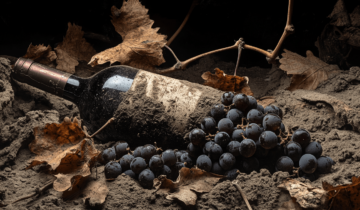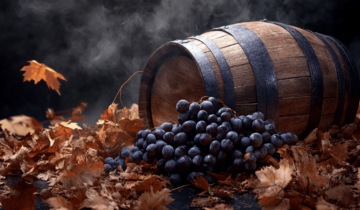A Short Background on The History of Rum
Rum is a distilled spirit with roots tracing back to the 17th century in the Caribbean. Produced primarily from sugarcane byproducts, such as molasses, rum quickly gained popularity as a versatile and flavorful drink. Today, rum is enjoyed worldwide, with countless varieties and styles reflecting the unique cultures and traditions of their origins.
Getting Started: Picking Your Rum Wash Ingredients
To make rum, you’ll need a few essential ingredients for your wash:
- Sugarcane Byproduct: Molasses or cane sugar is the primary ingredient in rum. Molasses provides a richer, more robust flavor, while cane sugar results in a lighter, more delicate taste.
- Water: High-quality water is crucial for creating a balanced rum. Use filtered or spring water to ensure a clean and neutral base for your wash.
- Yeast: Select a rum-specific or high-alcohol-tolerant yeast to convert the sugars in your wash into alcohol.
How to Make Rum: Wash Recipe
- Prepare the Molasses or Cane Sugar: For every gallon of water, use 2-3 pounds of molasses or cane sugar. Dissolve the molasses or sugar in warm water, stirring until fully combined.
- Cool the Mixture: Allow the mixture to cool to room temperature, around 70°F (21°C).
- Pitch the Yeast: Add the yeast to the cooled mixture, following the manufacturer’s instructions for the appropriate amount. Stir well to ensure even distribution.
- Aerate the Wash: Introduce oxygen into the wash by vigorously stirring or shaking the mixture. This step helps the yeast thrive and ferment efficiently.
Fermenting Your Rum Wash
- Transfer the Wash: Pour the wash into a sanitized fermentation vessel, such as a food-grade plastic bucket or glass carboy, leaving some headspace for the foam that forms during fermentation.
- Seal the Vessel: Attach an airlock to your fermentation vessel to allow CO2 to escape while keeping contaminants out.
- Monitor Fermentation: Fermentation typically takes 5-14 days, depending on the yeast strain and temperature. Monitor the process by taking regular specific gravity readings with a hydrometer. Fermentation is complete when the specific gravity stabilizes over several days.
Distilling
- Transfer the Wash: Once fermentation is complete, carefully transfer the wash to your still, avoiding any sediment at the bottom of the fermentation vessel.
- Heat the Wash: Apply heat to the still, gradually increasing the temperature until the wash reaches its boiling point. The alcohol will begin to evaporate and travel through the still.
Collecting Your Distillate
- Discard the Heads: The first portion of the distillate, known as the “heads,” contains undesirable compounds. Collect and discard the heads to ensure a cleaner, smoother rum.
- Collect the Hearts: The “hearts” are the primary and most desirable portion of the distillate. Collect the hearts, which contain the majority of the ethanol and desirable flavors.
- Tails Collection: The final portion of the distillate, the “tails,” contains heavier compounds and less desirable flavors. Stop collecting when the tails begin to flow, typically when the alcohol content falls below 40% ABV.
Aging Your Rum
- Dilute the Rum: Dilute the collected hearts with water to your desired bottling strength, typically between 40-50% ABV.
- Age the Rum: Aging rum in oak barrels imparts additional depth, complexity, and color to the spirit. The aging process can range from a few months to several years, depending on the desired flavor profile and characteristics. Experiment with different types of barrels, such as charred or toasted oak, to achieve unique flavor nuances.
- Monitor and Taste: Regularly check your aging rum for flavor development, color, and aroma. The aging process can be quite subjective, so rely on your senses to determine when your rum has reached its optimal maturity.
- Optional: Blending: To create a more complex and well-rounded rum, consider blending different batches or ages of rum. This process allows you to create a unique and consistent product that showcases the best characteristics of each component.
Conclusion
Creating your own rum at home can be a rewarding and enjoyable experience. By understanding the history of rum, selecting the right ingredients, and following the steps of fermentation, distillation, and aging, you can craft a unique and delicious spirit that reflects your personal taste preferences. With patience, practice, and attention to detail, you’ll be well on your way to producing a rum that rivals the finest offerings from professional distilleries. Cheers to your rum-making journey!







 No products in the cart.
No products in the cart.